 W
WThe Pimelodidae, commonly known as the long-whiskered catfishes, are a family of catfishes.
 W
WBagropsis reinhardti is a species of long-whiskered catfish. This species reaches about 22.7 cm (8.9 in) in standard length and is endemic to Brazil where it is found in the Das Velhas River basin in São Francisco River drainage. It is considered a threatened species by Brazil's Ministry of the Environment.
 W
WBagropsis reinhardti is a species of long-whiskered catfish. This species reaches about 22.7 cm (8.9 in) in standard length and is endemic to Brazil where it is found in the Das Velhas River basin in São Francisco River drainage. It is considered a threatened species by Brazil's Ministry of the Environment.
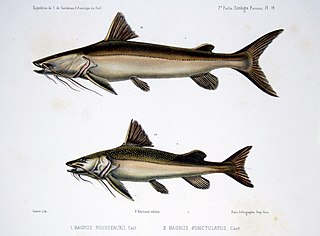 W
WBrachyplatystoma is a genus of catfish from the family Pimelodidae. As the occasionally used common name goliath catfishes indicates, this genus includes some of the largest species of catfish, including the piraíba, B. filamentosum, which reaches up to the region of 3.6 metres (12 ft) in length. Brachyplatystoma are found in the Amazon and Orinoco basins, and other tropical freshwater and brackish habitats in South America. Some species are migratory. These fish are important as food fish and, to some extent, aquarium fish.
 W
WBrachyplatystoma platynemum, The slobbering catfish, is a species of catfish of the family Pimelodidae that ranges from Brazil, Colombia and Venezuela.
 W
WBrachyplatystoma rousseauxii, the gilded catfish or dourada, is a species of catfish of the family Pimelodidae that is native to Amazon and Orinoco River basins and major rivers of French Guiana.
 W
WBrachyplatystoma vaillantii, the Laulao catfish or piramuta, is a species of catfish of the family Pimelodidae that is native to Amazon and Orinoco River basins and major rivers of the Guianas and northeastern Brazil.
 W
WCalophysus macropterus is a species of catfish of the monotypic genus Calophysus of the family Pimelodidae.
 W
WThe firewood catfish a species of South American pimelodid catfish, is the sole member of the genus Sorubimichthys. Known by locals along the Amazon Basin as peixe-lenha, the firewood catfish is so called because it is of little eating value and is often dried and used for firewood.
 W
WThe gilded catfish or jau is a South American catfish of the family Pimelodidae. Also known as manguruyu or black manguruyu.
 W
WThe porthole shovelnose catfish or spotted shovelnose catfish, Hemisorubim platyrhynchos, is the only species in the genus Hemisorubim of the catfish family Pimelodidae.
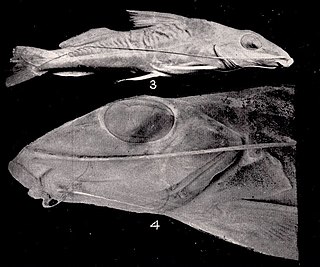 W
WIheringichthys megalops, is a species of demersal catfish of the family Pimelodidae that is native to Paraná River basin of Paraguay.
 W
WLeiarius is a genus of long-whiskered catfishes native to South America. Most of the genus' species are found in the aquarium hobby as ornamental fish.
 W
WLeiarius arekaima, commonly as Tiger Pimelodus, is a species of benthopelagic catfish of the family Pimelodidae that is native to Guyana and Brazil.
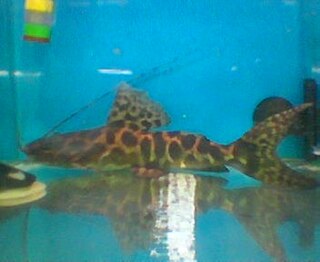 W
WLeiarius longibarbis, commonly as Marbled Pim, is a species of demersal catfish of the family Pimelodidae that is native to Guyana and Brazil.
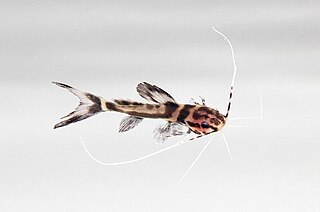 W
WLeiarius marmoratus, commonly as Sailfin Pim or Achara Catfish, is a species of demersal catfish of the family Pimelodidae that is native to Amazon and Orinoco river basins.
 W
WLeiarius pictus, commonly as Sailfin Pim, Painted Catfish or Saddle Catfish, is a species of demersal catfish of the family Pimelodidae that is native to Amazon, Essequibo, and Orinoco River basins of Colombia Venezuela, Peru and Brazil.
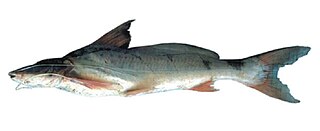 W
WLuciopimelodus pati is a South American species of freshwater long-whiskered catfish that inhabits the basin of the Río de la Plata and the Blanco River of Argentina, Brazil and Paraguay. Its scientific name originates from its common name patí, though it may be simply referred to as pez gato ("catfish") in Spanish. This species is the only recognized species in its genus.
 W
WMegalonema is a genus of long-whiskered catfishes native to South America.
 W
WPerrunichthys perruno is the only species of catfish of the monotypic genus Perrunichthys of the family Pimelodidae. It is sometimes called the leopard catfish. This species is native to Colombia and Venezuela, where it occurs in the Lake Maracaibo basin, and reaches a length of 60.0 centimetres (23.6 in) TL.
 W
WPerrunichthys perruno is the only species of catfish of the monotypic genus Perrunichthys of the family Pimelodidae. It is sometimes called the leopard catfish. This species is native to Colombia and Venezuela, where it occurs in the Lake Maracaibo basin, and reaches a length of 60.0 centimetres (23.6 in) TL.
 W
WThe redtail catfish, Phractocephalus hemioliopterus, is a pimelodid (long-whiskered) catfish. In Venezuela, it is known as cajaro, and in Brazil, it is known as pirarara, stemming from the Tupi language words pirá and arara. It is the only extant species of the genus Phractocephalus. This fish is common in the aquarium trade, although its massive adult size makes it unsuitable for all but the largest aquariums.
 W
WPimelodus is a genus of fish in the family Pimelodidae native to Central and South America.
 W
WPimelodus pictus, also known as the pictus cat or pictus catfish, is a small member of the catfish family Pimelodidae, native to the Amazon and Orinoco river basins and commonly kept as a pet in freshwater aquariums. Pictus catfish are sometimes mislabeled as Angelicus cats in the aquarium trade, but the latter name actually refers to an unrelated African catfish, the mochokid Synodontis angelica.
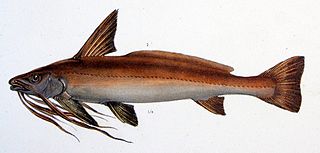 W
WPinirampus pirinampu is a species of catfish of the family Pimelodidae. P. pirinampu is also known as the flatwhiskered catfish.
 W
WPinirampus pirinampu is a species of catfish of the family Pimelodidae. P. pirinampu is also known as the flatwhiskered catfish.
 W
WPlatynematichthys notatus, the coroatá or striped catfish, is a species of catfish of the monotypic genus Platynematichthys of the family Pimelodidae. It is native to the Amazon and Orinoco basins in South America. In the Orinoco this distinctly spotted species reaches up to 1 m (3.3 ft) in standard length, but it reportedly only reaches about half that size in the Amazon.
 W
WPlatynematichthys notatus, the coroatá or striped catfish, is a species of catfish of the monotypic genus Platynematichthys of the family Pimelodidae. It is native to the Amazon and Orinoco basins in South America. In the Orinoco this distinctly spotted species reaches up to 1 m (3.3 ft) in standard length, but it reportedly only reaches about half that size in the Amazon.
 W
WPlatysilurus is a genus of long-whiskered catfishes native to South America.
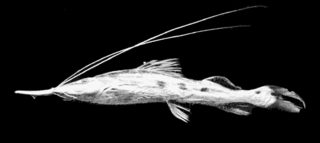 W
WPlatystomatichthys sturio is the only species in the genus Platystomatichthys of the catfish family Pimelodidae. It is sometimes called the sturgeon catfish. This species occurs in the Amazon Basin and reaches a length of about 40.0 centimetres (15.7 in) TL. Platystomatichthys is classified under the "Calophysus-Pimelodus clade". Within this clade, it is considered a part of the "Pimelodus-group" of Pimelodids, which also includes Pimelodus, Exallodontus, Duopalatinus, Cheirocerus, Iheringichthys, Bergiaria, Bagropsis, Parapimelodus, Platysilurus, and Propimelodus.
 W
WPlatystomatichthys sturio is the only species in the genus Platystomatichthys of the catfish family Pimelodidae. It is sometimes called the sturgeon catfish. This species occurs in the Amazon Basin and reaches a length of about 40.0 centimetres (15.7 in) TL. Platystomatichthys is classified under the "Calophysus-Pimelodus clade". Within this clade, it is considered a part of the "Pimelodus-group" of Pimelodids, which also includes Pimelodus, Exallodontus, Duopalatinus, Cheirocerus, Iheringichthys, Bergiaria, Bagropsis, Parapimelodus, Platysilurus, and Propimelodus.
 W
WThe porthole shovelnose catfish or spotted shovelnose catfish, Hemisorubim platyrhynchos, is the only species in the genus Hemisorubim of the catfish family Pimelodidae.
 W
WPseudoplatystoma is a genus of several South American catfish species of family Pimelodidae. The species are known by a number of different common names. They typically inhabit major rivers where they prefer the main channels and tend to stay at maximum depth, but some species can also be seen in lakes, flooded forests, and other freshwater habitats. They have robust bodies, and are important food fish. Recently, their population size has been on the drastic decline due to a variety of factors including overfishing and habitat destruction due to the construction of hydroelectric dams.
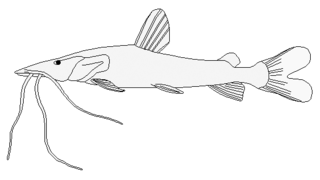 W
WPseudoplatystoma corruscans, the spotted sorubim, is a species of long-whiskered catfish native to the São Francisco and Paraná—Paraguay River basins in South America. This species grows to a length of 166 centimetres (65 in) TL.
 W
WPseudoplatystoma fasciatum or barred sorubim or barred catfish is a species of long-whiskered catfish native to the Suriname, Corantijn and Essequibo. The nocturnal predator feeds mainly on other fish and crabs. Females reach a more notable size. They become sexually mature at 56 cm (22 in), males at 45 cm (18 in) and this species reaches a maximum length of 90 cm (35 in) TL. Fecundity seems to be estimated at 8 million eggs per kg, but was recently measured in aquaculture at a lower, and more likely number of 150,000 eggs laid per kg.
 W
WPseudoplatystoma punctifer or spotted tiger shovelnose catfish is a species of long-whiskered catfish native to the Amazon basin, in Bolivia, Brazil, Colombia, Ecuador, Peru, and Venezuela.
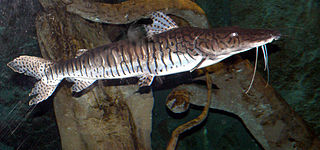 W
WThe barred sorubim is a species of long-whiskered catfish native to the Río de la Plata basin and Amazon basin in South America. It reaches up to about 60 cm (2.0 ft) in length.
 W
WPseudoplatystoma tigrinum, the tiger sorubim or caparari is a species of long-whiskered catfish native to the Amazon Basin in South America.
 W
WThe redtail catfish, Phractocephalus hemioliopterus, is a pimelodid (long-whiskered) catfish. In Venezuela, it is known as cajaro, and in Brazil, it is known as pirarara, stemming from the Tupi language words pirá and arara. It is the only extant species of the genus Phractocephalus. This fish is common in the aquarium trade, although its massive adult size makes it unsuitable for all but the largest aquariums.
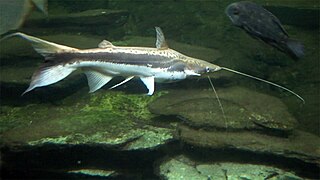 W
WSorubim is a small genus of long-whiskered catfish native to tropical South America. A number of characteristics allows the differentiation of each species in the genus. Sorubim species are important food fish in South America and are highly significant to fisheries of some areas; however, harvests of these fish are not identified as much as other, more popular food fishes such as Colossoma, Arapaima, and Brachyplatystoma. Some species of this family are popular aquarium fish.
 W
WThe firewood catfish a species of South American pimelodid catfish, is the sole member of the genus Sorubimichthys. Known by locals along the Amazon Basin as peixe-lenha, the firewood catfish is so called because it is of little eating value and is often dried and used for firewood.
 W
WSteindachneridion is a genus of South American pimelodid catfish.
 W
WZungaro is a genus of long-whiskered catfishes native to South America, with two recognized species as of 2018:Zungaro jahu (Ihering, 1898) Zungaro zungaro (Humboldt, 1821)